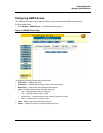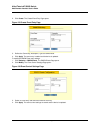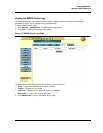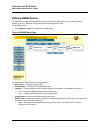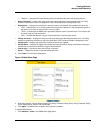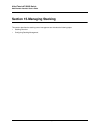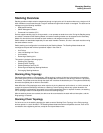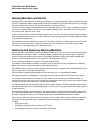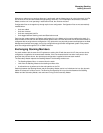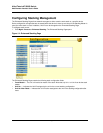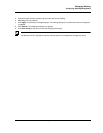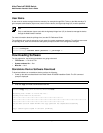
Managing Stacking
Stacking Overview
Page 169
Stacking Overview
Stacking provides multiple switch management through a single point as if all stack members are a single unit. All
stack members are accessed through a single IP address through which the stack is managed. The stack can be
managed using the following interfaces:
• Web-based Interface
• SNMP Management Station
• Command Line Interface (CLI)
Devices support stacking up to six units per stack, or can operate as stand-alone units. During the Stacking setup,
one switch is selected as the Stacking Master and another stacking member can be selected as the Secondary
Master. All other devices are selected as stack members, and assigned a unique Unit ID.
Switch software is downloaded separately for each stack member. However, all units in the stack must be running
the same software version.
Switch stacking and configuration is maintained by the Stacking Master. The Stacking Master detects and
reconfigures the ports with minimal operational impact in the event of:
• Unit Failure
• Inter-unit Stacking Link Failure
• Unit Insertion
• Removing a Stacking Unit
This section includes the following topics:
• Stacking Ring Topology
• Stacking Chain Topology
• Stacking Members and Unit ID
• Removing and Replacing Stacking Members
• Exchanging Stacking Members
Stacking Ring Topology
Stacked devices operate in a Ring topology. A Ring topology is where all devices in the stack are connected to
each other forming a circle. Each stacked device accepts data and sends it to the device to which it is physically
connected. The packet continues through the stack until it reaches the destination port. The system automatically
discovers the optimal path on which to send traffic.
Most difficulties in Ring topologies occur when a device in the ring becomes non-functional, or a link is severed. In
a stack, the system automatically switches to a Stacking Failover topology without any system downtime. An
SNMP message is automatically generated, but no stack management action is required. However, the stacking
link or stacking member must be repaired to ensure the stacking integrity.
After the stacking issues are resolved, the device can be reconnected to the stack without interruption, and the
Ring topology is restored.
Stacking Chain Topology
If a failure occurs in the stacking topology, the stack reverts to Stacking Chain Topology. In the Chain topology,
devices operate in a chain formation. The Stacking Master determines where the packets are sent. Each unit is
connected to two neighboring devices, except for the top and bottom units.



